USED ONE OF OUR LESSON PLANS?
Fill in our survey for a chance to win a Science North YETI mug! We will draw winners quarterly throughout the school year.
Fill in our survey for a chance to win a Science North YETI mug! We will draw winners quarterly throughout the school year.
In this four-part lesson, students will learn all about health equity, starting by walking through the “seeing over the fence” analogy to understand how equity is different from equality. They will then develop further context for this issue by examining vaccine inequity as a case study. In part 3, one of Science North’s Indigenous Interns interviews a nurse at the Wikwemikong Health Centre on the challenges of achieving health equity in Indigenous communities. In the final section, the Many Nations, One Voice for Wellness team at Telus Spark will take students through a workshop on Dr. Christopher Emdin’s “Science Genius” method with health equity as the theme. Students will learn how to put their thoughts, feelings and experiences about this complex issue into rap and song.
* Internet connection required
In this three-part lesson, students will learn how scientific research is conducted and why scientific integrity is important in determining what sources of information we can trust. They will understand what can happen when a lack of scientific integrity leads to misconduct and explore scientific integrity with a real-world example of how we develop and test new vaccines. Students will also learn the different parts of a research study and the signs of trustworthy research. They will be introduced to some trusted sources of health information as they learn about the agencies that oversee health research. They will learn about the importance of understanding history and increasing diversity in science as they explore the contributions of scientists from different communities and backgrounds. They will also explore the intersection of science and social issues as they learn how to have discussions about scientific literacy. Each learning objective is followed up by an online game or hands-on activity to reinforce the concepts.
* Internet connection required
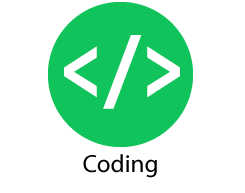
Students will investigate quantitative relationships in chemical reactions and solve related problems using Python.

Students will learn the principles of good experiment design, and then apply that knowledge to existing scientific or pseudoscientific works to evaluate their quality.
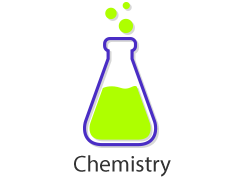
Students will use Problem-Based Learning to come up with a solution to the use of disposable water bottles in large events like marathons or festivals, perform a double displacement chemical reaction to create a polymer and figure out ways to minimize the impact on our water systems when using biodegradable polymers to deal with single-use plastics.

Waves around us. Even if we cannot see them, their properties help us see, hear, transmit information and much more. This lesson will explain more about the nature of waves, their properties, and areas of application. You will program a device that will use their properties to find objects and measure distance. You will learn how such devices are used and will code them. You will be using Tinkercad.
In this lesson, students will understand the role the immune system plays. They will learn about the different types of pathogens, how they infect our bodies and the stages of infection. In the Agents of the Immune System GooseChase experience, students will work independently or as part of a team to complete the missions, learn about the immune system and collect points. Students' submissions in the GooseChase app will remain hidden from other students who participate in the Agents of the Immune System experience.

Write pseudocode to balance the chemical formula and find the stochiometric ratio of a combustion reaction between a pure hydrocarbon and oxygen.

In this lesson, students will create a program in Scratch to solve problems using one of Boyle’s, Charles’ or Gay-Lussac’s laws. Once they have created the first program, they can modify it to create the other two laws.
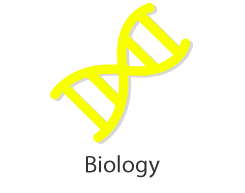
In this post activity to the school program, Neuroscience, students will learn the difference between reaction and reflex neural pathways. They will simulate what happens in their body during a reaction and during a reflex to better understand why there is a difference between the two.

Students will review about scalar and vector quantities, learn about position-time graphs, and create a coded program to test knowledge and understanding of position-time graphs.

Students will learn about scalar quantities and utilize these scalar quantities to solve simple one-dimension problems.

Students will learn about Mendelian Genetics, more specifically probability and monohybrid crosses, by completing a partial code.

Students will learn about Mendelian Genetics, more specifically probability and dihybrid crosses, by completing a partial code.

In this lesson students will learn about epigenetic “tags” and how gene expression can be affected by environmental factors. This lesson is intended for the college level.

In this lesson students will extract DNA from a banana. Students will also identify some benefits, risks and examples of genetic engineering. This lesson is intended for the college level.

In this lesson students will make a model of the respiratory system with everyday items. Students will also learn about respiratory diseases and how 3D printing technology can repair parts of the respiratory system. This lesson is intended for the college level.

In this lesson students will learn how yeast metabolizes different kinds of sweeteners. Students will also learn that a variety of factors can impact the gut microbiome, affecting human health. This lesson is intended for the college level.

In this lesson students will calculate the amount of carbon in local trees by doing measures on actual trees. Students will also learn how deforestation affects the carbon cycle. This lesson is intended for the college level.
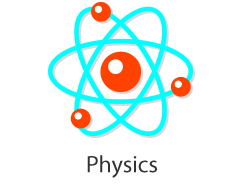
In this lesson students will build and race balloon cars. They will use free-body diagrams and appropriate equations to analyse motion in the context of Newton’s 3rd Law of motion. This lesson is intended for the university level.
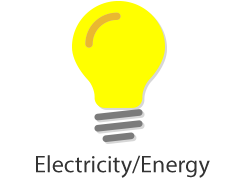
In this lesson students will make a saltwater battery to learn about battery technology. They will demonstrate how the voltage of a battery is affected when battery cells are placed in series or parallel. This lesson is intended for the university level.

In this lesson students will use an oscilloscope to compare the wavelength and amplitude of sounds from various items and instruments. They will perform calculations relating the speed of a wave to its wavelength and frequency. This lesson is intended for the university level.

In this lesson, students will do a resonance experiment using a wine glass and an oscilloscope. Students will calculate harmonic frequencies and wavelengths. This lesson is intended for the university level.

In this lesson students learn about Kirchoff’s Laws for current and voltage in series and parallel circuits by physically simulating circuits as a class and then by building their own circuits. This lesson is intended for the university level.

Students will discuss the importance of a dichotomous key in identifying various species. They will create their own dichotomous key using candy. As an extension, they can apply their knowledge to classifying living things.
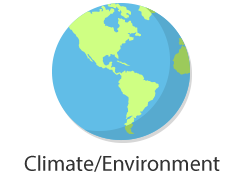
Through an interactive story, students will experience the issues relating to the water quality of the Great Lakes and St Lawrence River basin, from Lake Nipigon downstream to the mouth of the Atlantic Ocean. Hence, students will explore the impacts that local and regional issues can have on the world and experience the inter-connectedness between various human activities (industrial and commercial, agricultural, mining, and personal), and water pollution, both indirect and direct, in order to illustrate that pollution is not always visible. Students will be asked to make decisions in order to manage and prevent water pollution at a personal, local and national level.